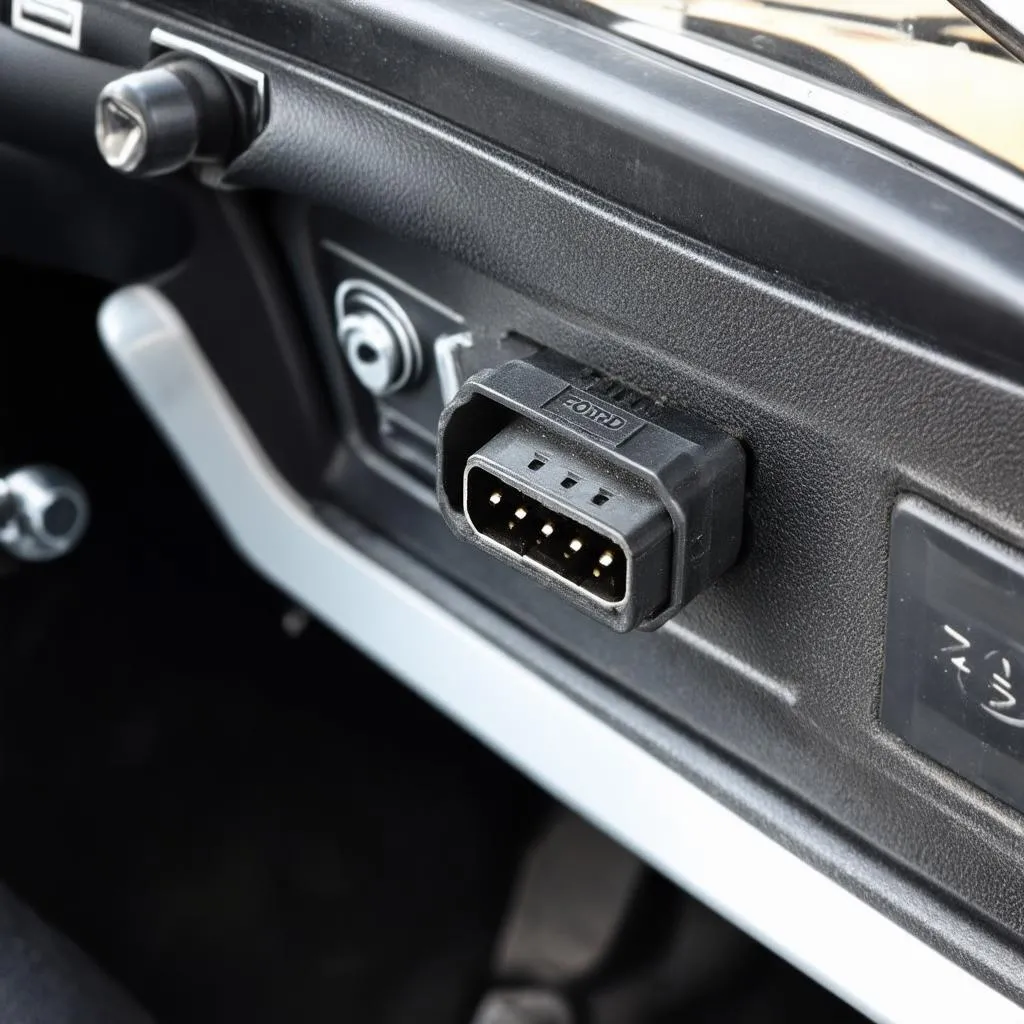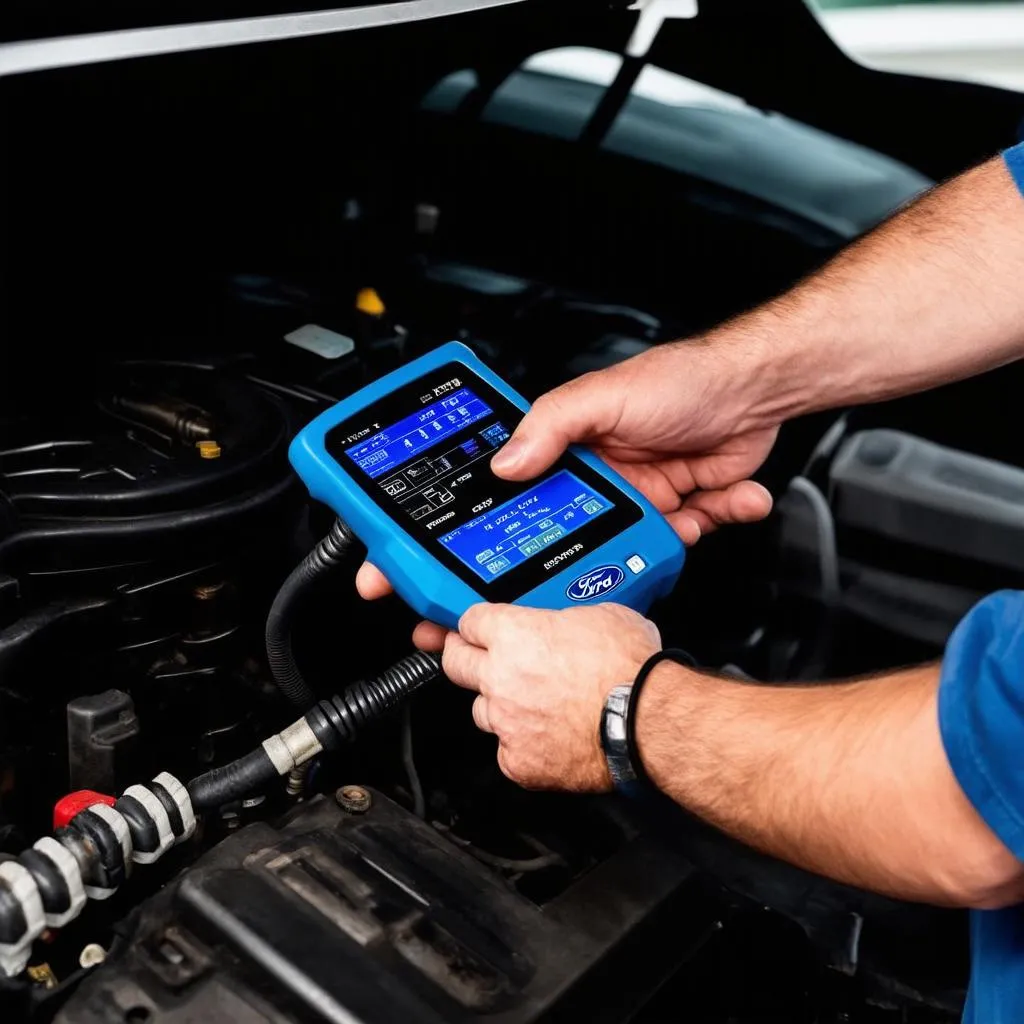Picture this: It’s a crisp autumn morning in 1994. You hop into your trusty Ford, turn the key, and…clunk. The engine sputters and dies. As you reach for your tool kit (presumably much larger back then), a wave of uncertainty washes over you. Thankfully, the world of automotive diagnostics was evolving, and onboard diagnostics (OBD) was starting to emerge. But how could you unlock the secrets hidden within your 1994 Ford’s nascent OBD system? Let’s dive into the world of “1994 OBD code retrieval Ford” and shed some light on this blast from the past.
Understanding the Cryptic Language of Your 1994 Ford
Back in the early ’90s, OBD systems were far from the sophisticated interfaces we know today. Forget sleek code readers with colorful displays; you were often left deciphering blinking lights like a cryptic message from the automotive gods.
What You Needed to Know:
- Pre-OBD-II: Most 1994 Ford vehicles were equipped with a precursor to the standardized OBD-II system, meaning they didn’t use the universal 16-pin connector found in later models.
- Manufacturer Specific Systems: Ford, like other manufacturers, had its own diagnostic connector and codes, adding another layer of complexity.
- The “Blink Code” Era: Many 1994 Fords relied on flashing “Check Engine” lights to communicate trouble codes. Deciphering these codes required consulting your owner’s manual or a service manual specific to your model.
Retrieving Those Elusive Codes: A Step Back in Time
Ready for a trip down memory lane? Here’s how you might have retrieved OBD codes from your 1994 Ford:
- Locate the Diagnostic Connector: This often involved some detective work, as connector locations varied by model. Your owner’s manual was your best friend here.
- Jump the Connector: Many systems required using a jumper wire to connect specific pins within the diagnostic connector. Again, your manual held the key to the correct pin combination.
- Count the Blinks: With the connector jumped, you’d turn the ignition on (but not start the engine). The “Check Engine” light would then flash in a specific sequence, indicating the trouble code.
- Decode the Message: Armed with your code, you’d then consult your manual (or a mechanic with the right resources) to decipher the meaning.
 1994 Ford OBD Connector
1994 Ford OBD Connector
Why This Matters: A Legacy of Self-Reliance
While seemingly archaic, understanding the basics of 1994 Ford OBD code retrieval offers a glimpse into a time when car owners had a more hands-on relationship with their vehicles. It was a time when a little ingenuity and a trusty manual could potentially save you a trip to the mechanic.
FAQs: Traveling Back to 1994
Q: Can I use a modern OBD-II scanner on my 1994 Ford?
A: Unfortunately, no. While some adapters exist for specific models, your best bet is to stick with the blinking light method.
Q: My 1994 Ford’s “Check Engine” light isn’t blinking. What now?
A: This could indicate a few things, from a faulty bulb to a more serious electrical issue. Consulting a mechanic is recommended.
Beyond 1994: The Evolution of Ford Diagnostics
Just like our world has changed drastically since 1994, so too have automotive diagnostic systems. Today, Ford vehicles boast incredibly sophisticated OBD-II systems, offering a wealth of information at your fingertips. Modern code readers provide detailed descriptions of issues, making diagnostics far more user-friendly.
 Modern Ford Diagnostics
Modern Ford Diagnostics
Need a Hand with Your Ford’s Inner Workings?
Whether you’re wrestling with a blinking light from your 1994 Ford or navigating the complexities of a modern system, remember that help is just a message away. Contact us on Whatsapp at +84767531508 for expert assistance with diagnostic tools and automotive repair guidance. We’re here to keep your Ford running smoothly, no matter its vintage.
Keep Exploring:
- [Link to an article about modern Ford diagnostic tools on techcarusa.com]
- [Link to an article about common Ford engine codes on techcarusa.com]
Let us know in the comments below if you have any questions or stories about your experiences with older Ford models and their unique diagnostic procedures. Happy wrenching!